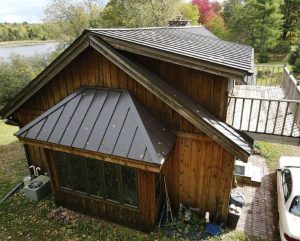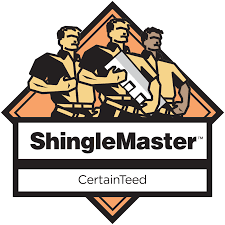Asphalt vs. Metal in Central Wisconsin: Which Roof Lasts Longer in Snow & Hail?

When it comes to choosing a roof in Central Wisconsin, homeowners face a tough decision: asphalt shingles or metal? With harsh winters, heavy snow, and unpredictable hail, understanding which material offers superior durability can save you time, money, and stress. Let’s break down the key differences to help you make an informed choice.
Snow Performance: Keeping Your Roof Intact
Snow can be brutal on roofing materials. Asphalt shingles are popular for their affordability and ease of installation, but they can struggle under heavy, wet snow. Ice dams can form, trapping water and potentially leading to leaks or shingle damage. On the other hand, metal roofs naturally shed snow due to their smooth, slippery surfaces. A properly installed metal roof reduces ice buildup, lowering the risk of structural damage and costly repairs. For Wisconsin winters, this snow-shedding ability makes metal roofs a standout.
Hail Resistance: Which Roof Can Take a Hit?
Central Wisconsin is no stranger to hailstorms, and impact resistance is crucial. Asphalt shingles vary in durability, with higher-grade options rated for hail resistance, yet even premium shingles can crack or lose granules under severe impact. Metal roofs, particularly standing seam designs, excel here. The interlocking panels of a standing seam metal roof absorb and deflect hail, reducing the likelihood of leaks or punctures. Homeowners seeking long-term protection often consider this a major advantage.
Winter Durability: Beyond Snow and Hail
Cold temperatures and freeze-thaw cycles can affect roofing materials differently. Asphalt shingles may become brittle over time, leading to cracking or curling. Metal roofs, especially those with protective coatings, maintain flexibility and resist weathering. Their longevity in winter conditions often surpasses that of asphalt, making them a strong investment for homeowners focused on durability.
Standing Seam Benefits
For those considering metal roofing, standing seam systems offer several advantages. These include superior water shedding, fewer exposed fasteners, and minimal maintenance requirements. The clean, sleek look also enhances curb appeal while providing excellent protection against Wisconsin’s extreme weather conditions. Paired with proper insulation, a standing seam roof can even improve energy efficiency by reflecting sunlight and reducing ice formation.
Cost Considerations
While metal roofs tend to have a higher upfront cost than asphalt shingles, their extended lifespan—often 40-70 years compared to 20-30 years for asphalt—can offset the initial investment. Maintenance costs are generally lower, and homeowners may enjoy potential insurance discounts due to improved hail and snow resistance. Premium Wautoma roofer services can guide you in selecting the right material based on your budget, aesthetic preference, and long-term goals.
Conclusion
Choosing between metal and asphalt shingles in Central Wisconsin comes down to weighing upfront costs versus long-term durability. Metal roofs offer superior snow and hail resistance, particularly standing seam designs, while asphalt shingles provide a cost-effective, traditional option. Both materials have their merits, but for homeowners prioritizing winter performance and longevity, metal roofing is a compelling choice.
For expert installation and advice on Wautoma asphalt shingles, trust us to ensure your roof stands strong through every snowstorm and hailstorm.














